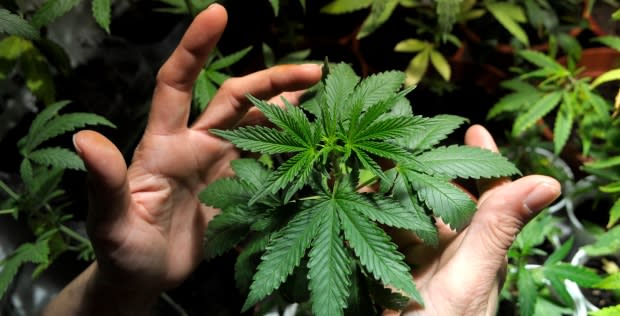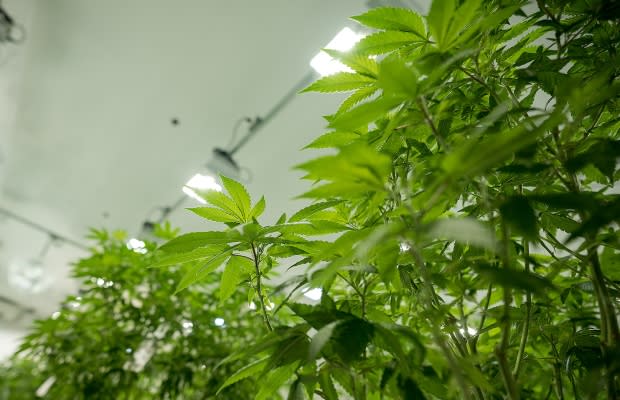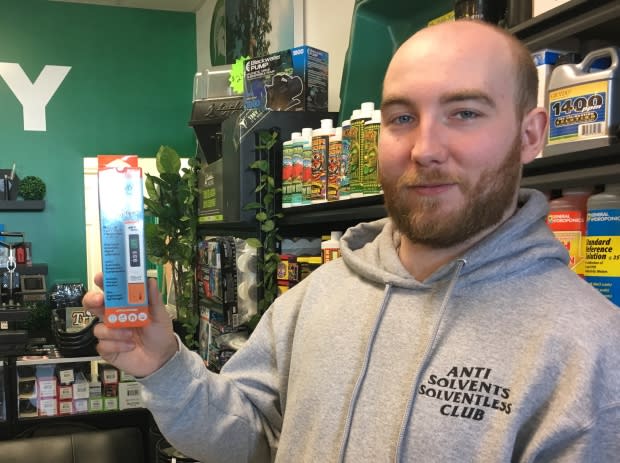Growing pot? Here are some common mistakes to avoid
With more than $7 million in legal pot purchased from P.E.I. Cannabis in the first six months of legalization, it's clear Islanders are interested in consuming the product, and interest in growing marijuana is also, well, growing, say retailers.
Veseys Seeds in York, P.E.I., has devoted six pages in its catalogue to growing at home — grow lights have been a big seller — and many people have been coming to their store seeking equipment and advice.
Grow Daddy, which sells cannabis growing and smoking equipment online and from its storefront in Stratford, P.E.I., has two staffers who call themselves growing experts — Hunter Kerr and Shawn Harnden — and they're busy selling equipment and giving advice to many new customers, they say.
Seed sales not 'strong'
P.E.I. Cannabis began selling marijuana seeds in January but says interest in the legal seeds isn't strong. It secured what it calls a limited supply from Ontario-based Canopy Growth for purchase in-store and online.

"Sales in the seeds sub-category have not been as strong as other formats," said an emailed statement from P.E.I. Cannabis to CBC.
"In order to ensure customers have a legal source for cannabis seed, P.E.I. Cannabis intend to increase the variety of seeds in stock as supply becomes available."
It can be a bit of an investment. But it's certainly cheaper than purchasing it at the store. — Hunter Kerr
A visit to the agency's site shows it has only two varieties of indica seeds for sale. A package of four seeds costs $52.99 — that's more than $13 per seed, plus tax.
People are "definitely ordering [seeds] from other provinces," said Kerr. "It tends to be better genetics and better service too."
Needless to say, growers will want to handle those seeds with care — Kerr and Harnden described some of the pitfalls for those who are new to the process.

"We really encourage growers to take some time and do some homework on what it takes to grow and then you won't let yourself down," Kerr said.
"It can be a bit of an investment. But it's certainly cheaper than purchasing it at the store — if you're smoking or consuming in any quantity."
1. Going hydroponic
Harnden said hydroponic growing is harder than it looks, mainly because controlling nutrients in water is more difficult than in soil.
Many rookies dive right in to hydroponic growing, he said, then discover just that and switch back to growing in soil.
"Soil is more forgiving," said Harnden.
2. Growing outside
Growing outdoors is fun and can be cheaper, both said, but can lead to an inferior product for your investment of time and energy, especially if you don't have a fast-maturing strain.

Because the plants are at the mercy of nature, they may get too much wind or not enough ventilation, pests, not enough moisture or sun, and an early frost can kill off all your season's work before it is harvested.
"It's not just something you can put outside and then in six months have bud," Kerr said. "You're going to want to tend to them almost as much as you tend to them indoors."
If you are planning to grow outdoors this summer you should have already started growing your seedlings, Kerr said, because you'll want to plant them outside as soon as the weather allows, to aim for an October harvest, when temperatures can dip below zero.
"A lot of first-time growers don't understand the importance of proper environmental factors," Kerr said.
3. Getting light cycles wrong
Once you have germinated the seeds and they begin to sprout you can plant them in soil and give them light 24/7 for the first few weeks.

Kerr said more expensive lights give higher wattage which will be needed for the plant's vegetative growth stage and flowering stage.
In vegetative growth they need 18 hours of light and six hours of darkness, he said. In the flowering stage they need 12 hours light and 12 hours dark.
4. Improper sexing
You will want to get rid of the male plants Kerr said — only the females produce the buds you want. You do not need the male plants for this.
After six to eight weeks of growing, the difference between male and female plants becomes clear — at the node, where the plant's branches extend from its stalk — male plants have small sacks that will release pollen, and female plants have white "hairs."
There are lots of tutorials online to help you sex your plants if you are unsure, he said.
5. Poor PH levels
PH levels in the soil and water need to be well-controlled, both said.

Kerr said cannabis likes a PH range of 5.5 to 6.5. Because cannabis is fast-growing, anything outside that PH can hinder the plant's ability to absorb nutrients.
He recommends growers PH balance everything that goes into the soil. Mix water with plant food then get a PH reading with a PH pen, and adjust the PH.
"To get good results it takes staying on top of these things," Kerr said.
6. Improper pruning
Excess leaves need to be pruned from a marijuana plant, Kerr said.
Fan leaves need to be removed — those are larger leaves that don't have a bud site at the node, he said, that are just used for the plant to provide photosynthesis. Once the plant begins to shadow those lower leaves, they can be removed.
"If you pluck them off the plant it is able to direct the energy toward the canopy," Kerr said.
7. Not controlling moisture
Rookies will often grow a few plants in a big open basement with a light, Harnden said, but cannabis plants need different heat and humidity for different stages of growth — more for growing leaves, less for plumping up buds during flowering.

Hanging reflective material or fabric or using a growing tent (they range from a few hundred dollars to more than $1,000) will help control this, Kerr and Harnden say.
The plants also require a certain amount of ventilation to keep mold, mildew and fungus at bay.
Growing indoors usually takes about four months until harvest, while outdoor plants take about six months. Depending on the strain of plant and the quality of your setup, Harnden says each plant can yield anywhere from one to eight ounces of product.
"That should take care of you for the whole year," Harnden said with a smile.
A reminder that under P.E.I.'s Cannabis Act, a household is permitted to have four cannabis plants, and that cannabis grown outdoors cannot be visible from public spaces and must be in a locked enclosure at least 1.52 metres high.
More P.E.I. news

